Does your browsing history show website activity that you have not visited? This is indeed a strange issue, and in this post, we will tell you why this can happen and what you can do about it.

Why does browsing history show websites not visited?
- Shared Devices: If you are on a shared computer, or your browser sync account (like Google account for Chrome) is logged into other devices, your browser history can sync.
- Embedded Content: Many websites pull videos and other content from separate websites and pages. Interacting with them can cause your browser to register them as a part of your browser history.
- Prefetched Pages: To optimize the browsing experience, Chromium-based browsers prefetch pages based on your browsing activity. These can show in your browser history even if you’ve not visited them.
Read: How to clear browser cache, cookies, and history in Chrome and Edge.
Fix Browsing history shows website not visited
If your browser shows history for websites that you have not visited or search activity that you never carried out, then here are some suggestions that will help you resolve the issue:
- Disable sync from other devices
- Disable Popups
- Uninstall unused extensions
- Disable preload pages
Here is how to find and fix it.
1] Disable sync from other devices
When sync is on, the browser will sync your browsing history and virtually every browsing component through the devices you are logged in to. If you wish to stop receiving browsing history from your other devices, you must turn off sync or log out from the specific devices you wish to stop syncing.
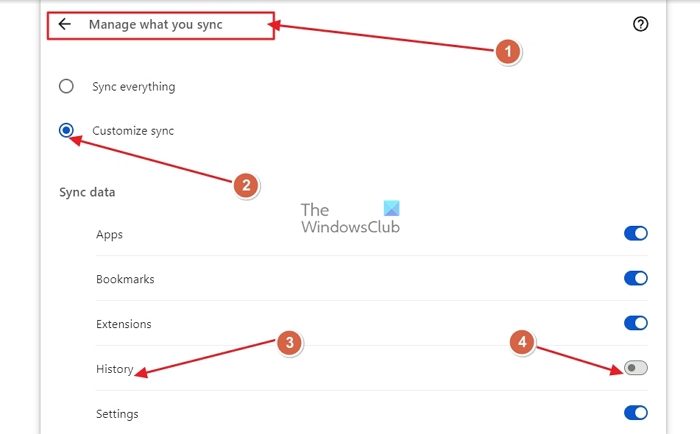
- Open Chrome settings and head to the You and Google Section from the left pane.
- Now, open Sync and Google Services.
- After that, open Manage What You Sync.
- Change the sync settings from Sync Everything to Customize Sync.
- Please scroll down to find the History option and toggle it off
- You can also turn off sync altogether by clicking the Turn Off button next to the sync details in the Sync and Google Services section.

If you wish to stop browser history sync only from a specific device, you must log your Google account out from the device or Chrome on that device. Here’s how:
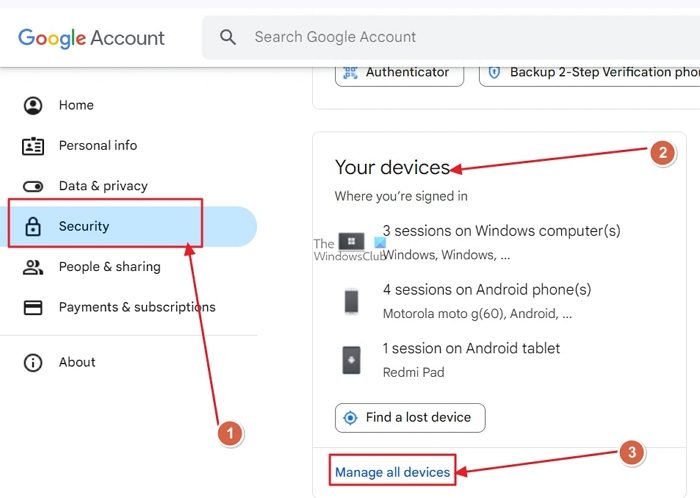
- Open My Account on Google.
- On the website, head to the Security section from the left pane.
- Scroll down to find the Your Devices option and open it.
- Now, find the device you wish to sign out from, open it, and click the Sign-Out button below the device details.
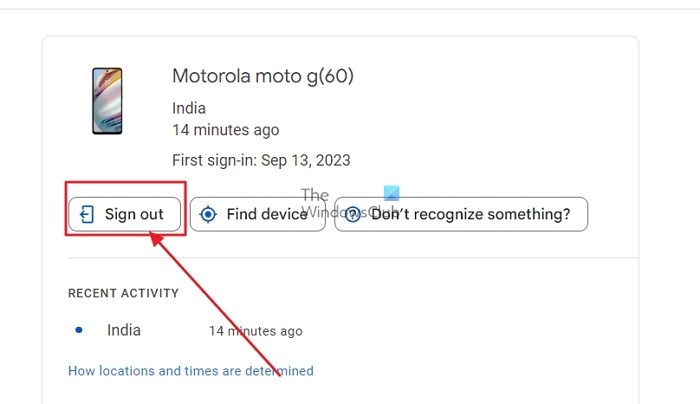
Most Chromium-based browsers, such as Edge, Firefox, Brave, and Opera, use a similar method for syncing browsing data across devices. For Edge, a Microsoft account is used; for Firefox, a Mozilla account, and similarly for all.
You can access the Sync settings from the Settings in all of these browsers, and to prevent data from specific devices from syncing with your browser, log out of your accounts.
2] Disable Popups
Popups serve ads or load extra content or features for specific websites. Links visited through these popups can often be unwanted and appear in your browser history. Here’s how to turn them off:
- Open Chrome settings.
- Head over to the Privacy and Security section from the left pane.
- Find Site Settings and open it.
- In Site settings, please scroll down to find the Popups and Redirects option and click on it.
- Change the default behavior to Don’t allow sites to send pop-ups or use redirects.
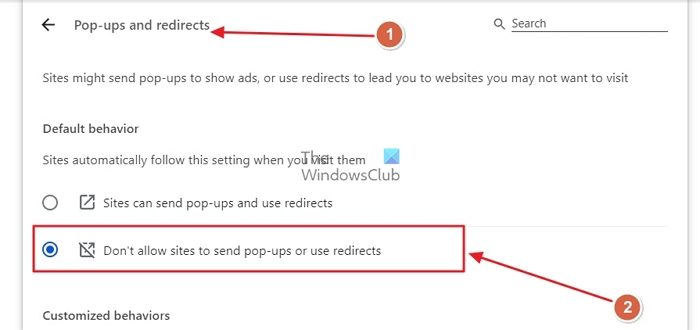
This will disable popups for all sites; if a site feature doesn’t work or content doesn’t load, you can always temporarily allow popups through a notification on the site while browsing.
Read: How to block cookie consent popups in Chrome, Edge, and Firefox.
3] Uninstall Unused Extensions
Browser extensions can visit websites and modify your browsing history. You can uninstall unused extensions or view permissions for extensions to find out which ones to uninstall:
- Click on the Extension icon from the top right corner of Chrome and click on the Manage Extension option from the window.
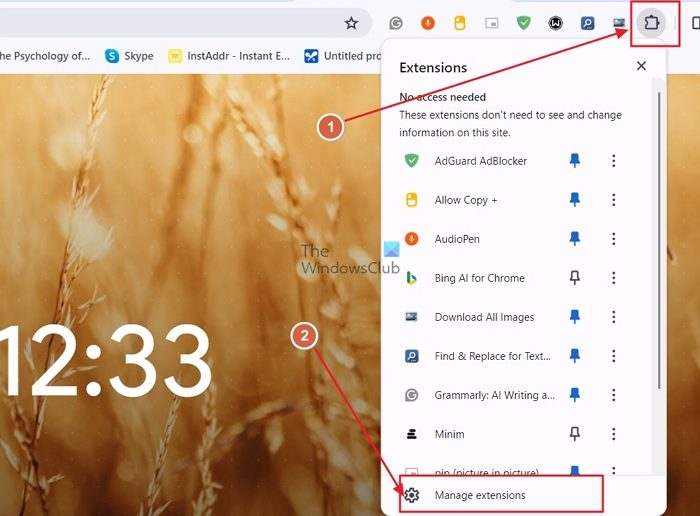
- Now, you will see all the extensions listed there.
- You can view Details to find out if the extension has permission to open webpages and alter browser history.
- You can also click the Remove button to uninstall the extension from your browser.
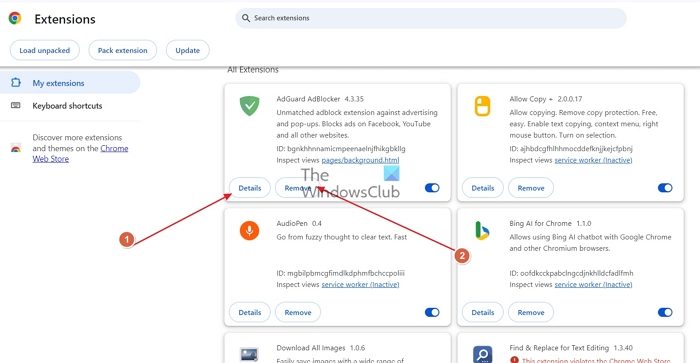
4] Disable Preload Pages
Chromium-based browsers can preload pages based on your browsing activity. These preload pages show up in your browsing history, even if you have not visited them:
- Open Chrome Settings and then open the Performance section from the left pane.
- In the Performance options, scroll down to find the Speed section.
- Now, toggle the Preload Pages option off.
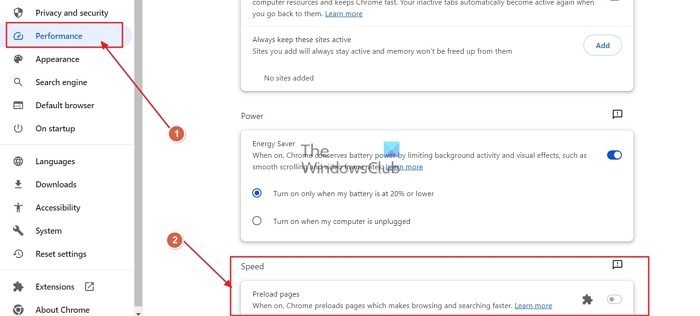
We hope you found the article to be helpful and were able to fix the browsing history showing the website not visited issue for yourself.
Will anyone see my browsing history?
If you’re concerned about your online privacy and have wondered if your search history is visible to others, the answer is yes. In addition to yourself, all intermediates, including the search engine itself, your web browser, your internet service provider (ISP), some advertisers, website owners, app owners, and, in some cases, authorities.
Does Google delete all history?
Google stores your search history by default, but you can delete it manually or set up auto-delete to clear it automatically clear your search history after a chosen period (3 months, 18 months, or 36 months).
Leave a Reply